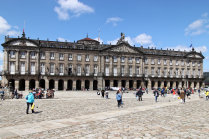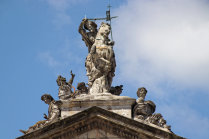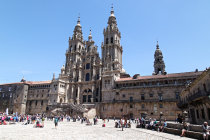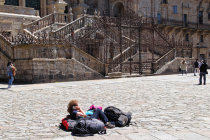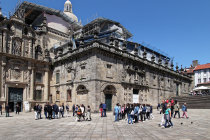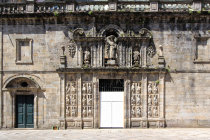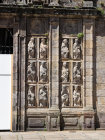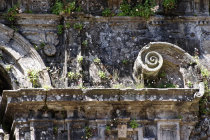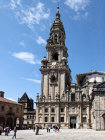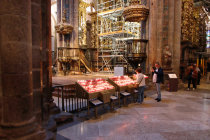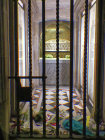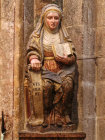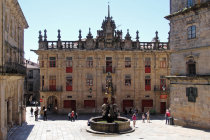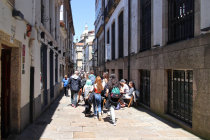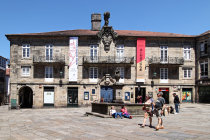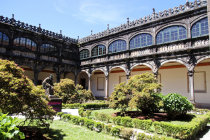
Santiago de Compostella is the capital of Galicia, a Spanish autonomous community with ancient Celtic roots.
The city's origin,
history and name are closely tied to Apostle James.
St James was beheaded in Jerusalem in 44 AD, but his remains somehow made
it all the way to Mount Libredon in northern Spain to be re-discovered in 814 AD.
King Alfonso II ordered a chapel to be
build over the tomb and is said to be the first pilgrim to the site. Many more from all over Europe would follow, creating an extensive
network of pilgrimages that became known as the Camino de Santiago. In the process Santiago de Compostella arose around
the site.
Pilgrims end their quest at the Praza do Obradoiro in front of the cathedral.
This cathedral replaced the original
chapel. Construction started in 1075 and finished in 1211, but over the centuries many changes and enlargements took place. The cathedral sits
at the center of Santiago's Old Town with bars , restaurants, museums and old university buildings like the Pazo de
Fonseca.
We visited Santiago in May 2019 and found large parts of the cathedral's interior and exterior hidden behind scaffolding.



